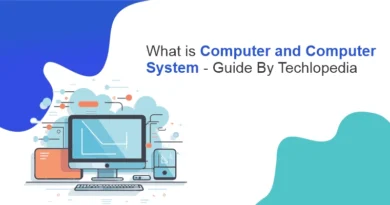What is File Management? A Guide by Techlopedia
In today’s digital age, managing files efficiently is more crucial than ever. Whether you’re a professional handling multiple projects, a student organizing research, understanding file management is key to productivity and data security. In this guide, we’ll explore the essentials of file management, from its definition to practical examples. Let’s understand file management and make your digital life easier and organized with Techlopedia experts!
File Management Definition
File management is the process of organizing, storing and accessing files on a computer or storage device in a way that makes them easy to find, access, and modify. It involves creating a systematic structure for files and folders, naming them, and practices for backing up and protecting data. Effective file management ensures that you can quickly locate your files when needed, share them with others, and protect them from loss or unauthorized access.
File Management Examples
Effective file management ensures that important documents, photos, and other files are organized, secure, and easily accessible, saving time and reducing frustration. It aids in preventing data loss through proper backup strategies. To illustrate the importance of file management, consider the following scenarios:
- Project Management: Organizing project documents by phases, such as planning, execution, and closure, with subfolders for contracts, reports, and communications.
- Photography: Sorting photos by event and date, with separate folders for raw files, edits, and final versions.
- Academic Research: Creating folders for each research project, with subfolders for literature reviews, data analysis, and draft versions of papers.
These examples highlight how a logical structure makes it easier to manage and retrieve files, ultimately saving time and reducing stress. Furthermore, this organization facilitates seamless collaboration and sharing, ensuring that team members or family can access and contribute to documents and projects without confusion.
Recommended for You: What Is SEO? Meaning, Examples & How to Optimize Your Site
File Management System
A file management system (FMS) is software that manages data files in a computer system. It provides a way to organize, store, retrieve, and manage file permissions. FMS is crucial for operating systems to ensure that files are stored efficiently and are easily accessible. It includes features like directories (or folders) to group files by type or project, file naming conventions, and metadata tagging for advanced searching capabilities.
File Management Software
Several software solutions exist to enhance file management beyond the basic capabilities of an operating system. These tools offer advanced features such as automatic categorization, duplicate file removal, cloud syncing, and comprehensive search functionalities. Examples include:
- Microsoft OneDrive and Google Drive for cloud-based file storage and sharing.
- Dropbox for syncing files across devices and sharing large files.
- Adobe Bridge for managing and organizing digital assets like photos and videos.
Choosing the right file management software depends on your specific needs, such as the type of files you handle, the level of security required, and whether you need cloud access or collaboration features.
File Management System vs DBMS
While both file management systems and database management systems (DBMS) store and manage data, they serve different purposes. An FMS organizes files in a hierarchical structure and is ideal for documents, images, and other standalone files.
In contrast, a DBMS is designed to handle structured data in a more complex, relational manner, allowing for efficient data retrieval, manipulation, and analysis through queries. DBMS is better suited for applications requiring transaction processing, reporting, or analytics, like customer databases or inventory systems.
Trending Topic: WhatsApp Channels What Does The Latest Update Say?
File Management in Linux
Linux offers a powerful and flexible environment for file management through its command-line interface (CLI) and graphical file managers. Commands like `ls` for listing files, `cp` for copying, `mv` for moving, and `rm` for deleting, provide granular control over file operations.
Graphical file managers like Nautilus (GNOME), Dolphin (KDE), and Thunar (XFCE) offer user-friendly interfaces for those who prefer point-and-click interactions. Linux’s file system hierarchy, permissions system, and support for scripts further enhance its file management capabilities, making it a favorite among power users and IT professionals.
Effective file management is essential for anyone who uses a computer for work or personal purposes. By understanding and implementing a structured file management system, utilizing the right software, and leveraging the capabilities of your operating system, you can significantly improve your productivity and data security. Whether you’re a Windows user, a Mac enthusiast, or a Linux power user, mastering file management practices will serve you well in the digital era.
Source: https://www.techopedia.com/definition/1832/file-management-system



